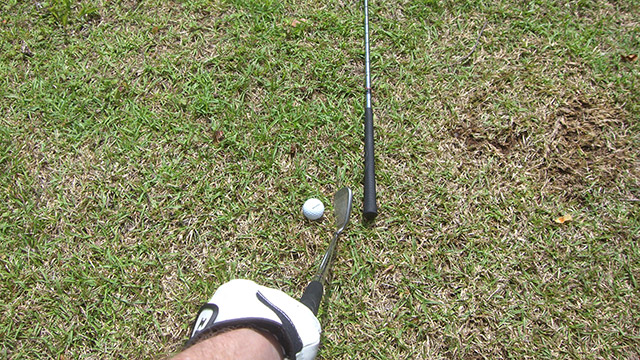NEWS
What you can learn from LPGA pro's tempo

The LPGA Tour is experiencing an explosion of young, talented golfers with impeccable, controlled swings. The women who are winning tournaments this season have impressive rhythm and tempo -- and it's something amateur golfers should strive for when they play, too.
Lizette Salas scored her first LPGA Tour victory on Sunday at the Kingsmill Championship in Williamsburg, Va. She practices staying in rhythm and tempo before every round, as evidenced by videos of her daily drills on her Facebook page.
PGA professional Mark Whetzel is director of golf at Thanksgiving Point Golf Course in Lehi, Utah. As a teaching professional, creating a large, rhythmic takeaway is the key to creating a proper golf swing. And it's all about making your larger muscles do the work.
PGA PROFESSIONALS: Find an instructor near you
"Use your big muscles in the upper body to create the takeaway," Whetzel said. "Try and get your front shoulder (left shoulder for right-handed players, right shoulder for left-handed players) working under your chin, as your upper body dominates the takeaway.
"The reason why the big muscles, primarily your shoulders, are key during the takeaway is it creates a wide continuous moving arc, which in turn creates natural rhythm."
Instead, Whetzel said most amateurs have a tendency to bring the club back with their arms or wrists, which creates all sorts of issues with trying to create a repeatable motion.
"Most faults in the golf swing are noticeable at the point of takeaway," Whetzel said, "especially when using the small twitchy muscles: hands, arms, or wrists. When these small twitchy muscles dominate the takeaway, it results in a very steep, awkward, non-cohesive takeaway, which results in a drastic decrease in distance and accuracy."
MORE INSTRUCTION VIDEOS: Is your swing plane on the right path?
So how do you train your brain to remember to turn the shoulders and not your arms? Whetzel has a great drill he uses with his students.
Set the shaft of an iron on the ground, perpendicular to your stance, with the grip directly behind your address point. Then, with a mid-iron, set up so that when you begin your takeaway, the club in your hand will sweep away the club on the ground.
"When taking the club back, you will immediately create resistance between the back of your club and the butt end of the club directly behind," Whetzel said. "This creates immediate resistance, and proper feel for what the resistance and muscles need to feel during a proper takeaway. If you try to pick the club up with your small muscles, the club behind you will create an awkward feeling, and the club behind you will be in the way of your swing and will not naturally sweep away."
Whetzel said the key to this drill is doing it smoothly and slowly, so that you get the right feedback from the exercise. Concentrating on making a slower, smoother takeaway will make it easier to replicate a good swing every time.
GOLF FOR BEGINNERS: Learn more about the fundamentals
"When doing this drill properly, the club on the ground will naturally sweep away, creating the feeling and feedback needed for a proper takeaway with the shoulders," Whetzel said. "Also, the slower and lower you take the club back the easier it is to sweep the club away. So, in essence, this drill creates a smoother tempo and helps trains the bigger upper body muscles with instant feedback."
As Whetzel said, no one ever hits the ball on their takeaway, but using the large muscles -- turning with the shoulders -- will create a golf swing that should help you hit the ball farther and straighter more often.
